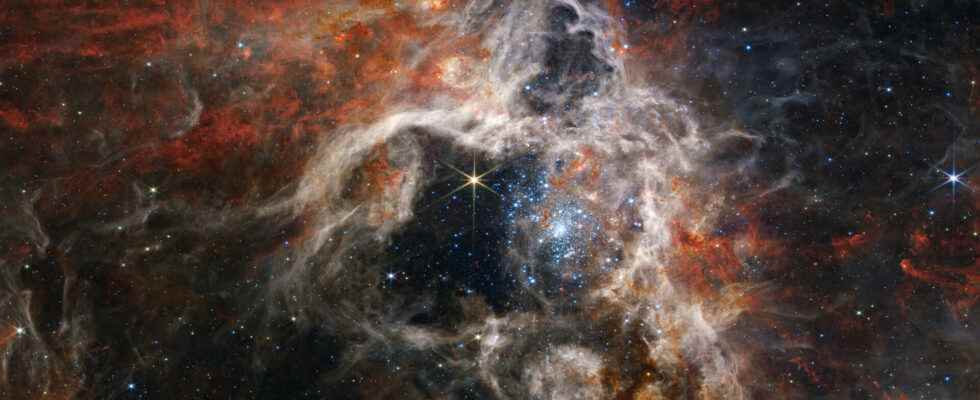The James Webb telescope has definitely not finished surprising us. Thanks to its tools, the machine offers us a striking view of the Tarantula Nebula. A photo rich in colors and lessons.
And this hair-raising spectacle does not occur very far from our home.
An observation that leaves you speechless
Last July, James Webb already dazzled us with his first images of celestial objects. Since then, NASA has frequently returned to the charge with bursts of magnificent photos… and the one we were able to discover last week is no exception. Thus, the telescope recently turned in the direction of the Tarantula Nebula.
The latter is located “only” 161,000 light years from our Earth and more precisely in the Large Magellanic Cloud. This famous nebula is quite simply the largest as well as the brightest star forming region within the Local Group. The latter contains about 60 galaxies close to the Milky Way. In short, as much to say that it is the perfect target when you hope to obtain breathtaking shots.
Details not to miss
On its site, the ESA (the European Space Agency) has dissected the many elements observed by James Webb in this Tarantula Nebula. For this, the telescope used several tools such as the NIRCam camera which operates in the near infrared. In the center of the image at the top of this article, we can thus see tens of thousands of young massive stars (in pale blue). Others (in red) are covered in dust.
Also, thanks to the NIRSpec spectrometer, a young star emerging from the nebula could be immortalized. Finally, the MIRI infrared instrument finishes the job by detecting the cooler dust and gas which then start to glow. Note that the rust color visible around the cavity of this nebula indicates the presence of very dense gas. In particular, it will allow the emergence of new stars.
By studying the Tarantula Nebula, scientists hope to be able to understand star formation as it took place when the universe was still very young. Because this region has a chemical composition similar to that of the immense regions in which the stars were forming at a frantic rate during the “early hours” of the universe.
Source : ESA

4